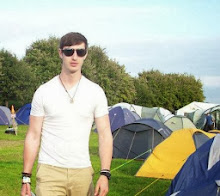
Wednesday, 15 September 2010
Monday, 6 September 2010
Sunday, 5 September 2010
Camouflage Layout and sizing experiments
Prefer the layout on the left. This is because it truns into the pattern the more the items are copyed and used. and achieves the style and look of a camouflage.
Items Colour test
For these images i have Experimanted with the use of different colours based upon each type on camouflage.



 Overall i prefer the colour scheme of the Woodland and Snow camouflage. this is because i feel that it will produce the best outcome and make it obviouse what it represents. i did not chose the other colour schemes because i felt that too many of the colours did not go well with the designs or were be to bland and not as interesting to work with.
Overall i prefer the colour scheme of the Woodland and Snow camouflage. this is because i feel that it will produce the best outcome and make it obviouse what it represents. i did not chose the other colour schemes because i felt that too many of the colours did not go well with the designs or were be to bland and not as interesting to work with.Wednesday, 1 September 2010
Tuesday, 31 August 2010
Camouflage Origins
The History of Camouflage The term camouflage comes from the French word camoufler meaning "to blind or veil." Camouflage, which is also called protective concealment. This means to disguise an object, in plain sight, in order to conceal it from something or someone.

In the late 1800’s, an American artist named Abbott Thayer made an important observation about animals in nature that became a useful tool in developing modern camouflage. After studying wildlife, Thayer noticed the coloring of many animals graduated from dark, on the backs, to almost white on their bellies. This is an important property that is very useful in modern camouflage. This graduation from dark to light breaks up the surface of an object and makes it harder to see the object as one thing. The object loses its 3D qualities and appears flat.

Camouflage, as we know it today, was born in 1915 when the French army created a new unit called the camouflage division. Artists were among the first people the French army called in to help develop camouflage for the use during W.W.I.
Artist research - Patrick Caulfield
Patrick Caulfield
Patrick Caulfield studied at the Chelsea School of Art from 1956 to 1960, and at the Royal College of Art from 1960 to 1963, where his fellow pupils included David Hockney and R. B. Kitaj. After he left, he returned to Chelsea as a teacher.
In 1964, he exhibited at the New Generation show at London's Whitechapel Gallery, which resulted in him being associated with pop art.

Patrick Caulfield studied at the Chelsea School of Art from 1956 to 1960, and at the Royal College of Art from 1960 to 1963, where his fellow pupils included David Hockney and R. B. Kitaj. After he left, he returned to Chelsea as a teacher.
In 1964, he exhibited at the New Generation show at London's Whitechapel Gallery, which resulted in him being associated with pop art.

Artist research - Michael Craig-Martin
Michael Craig-Martin
Michael Craig-Martin was born in Dublin in 1941 and educated in the United States, studying fine art at Yale University. He returned to Europe in the mid-1960s, becoming one of the key figures in the first generation of British conceptual artists. He was a professor at Goldsmith's College from 1974-1988 and 1994-2000, where he remained a powerful influence on the emerging British artists.

 I find the way the artist had integrated typography into the design with the style of camouflage is really effective. this is because he has used other lettering and symbols to hide and distort the other objects and type. This is a key factor for camouflage to achieve
I find the way the artist had integrated typography into the design with the style of camouflage is really effective. this is because he has used other lettering and symbols to hide and distort the other objects and type. This is a key factor for camouflage to achieve
Michael Craig-Martin was born in Dublin in 1941 and educated in the United States, studying fine art at Yale University. He returned to Europe in the mid-1960s, becoming one of the key figures in the first generation of British conceptual artists. He was a professor at Goldsmith's College from 1974-1988 and 1994-2000, where he remained a powerful influence on the emerging British artists.



 I find the way the artist had integrated typography into the design with the style of camouflage is really effective. this is because he has used other lettering and symbols to hide and distort the other objects and type. This is a key factor for camouflage to achieve
I find the way the artist had integrated typography into the design with the style of camouflage is really effective. this is because he has used other lettering and symbols to hide and distort the other objects and type. This is a key factor for camouflage to achieve
Saturday, 28 August 2010
Research on different camouflages
Different types of man made camouflage

^ Selection of different camouflage

Snowy camouflage: This type of 'camo' is tradtionaly used in an Snowy, rocky environment to help blend in with all the rocks, shadows and natural formation in that environment.

Woodland Camouflage: This 'camo' is traditionally used in woodland/forest environtment to help blend into the trees, shrubs and undergrowth.
NATURAL Camouflage
Examples of natural camouflage


^
This is a good example of how camouflage can also be about shape rather than just colour alone
Subscribe to:
Comments (Atom)














